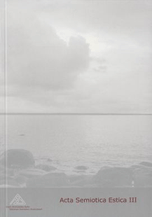Semioloogilisest kinokeeleteooriast
On semiological theory of film language
Author(s): Katre PärnSubject(s): Semiotics / Semiology
Published by: Eesti Semiootika Selts
Keywords: semiology; film language; semiological method; syntagmatic; paradigmatic; selection; meaning; code; semioloogia; kinokeel; semioloogiline meetod; selektsioon; kombinatsioon; tähendus; kood
Summary/Abstract: Early film theories either used the term “film language” metaphorically and called attention to the communicative potential of cinema or tried to provide a more solid framework for the notion with the help of linguistics. In the long run it gave rise to the situation where the existence of film language depended upon the definition of language itself, whether it was assemblage of words, material with double articulation, means for communication or something else. To abandon the comparison with natural language, one has to understand the deep structure of all language-like entities. Ferdinand de Saussure’s semiological language theory and its refinement by Louis Hjelmslev provide an insight not only into the structure of natural language but into all possible languages, and this can be regarded as a basis for creating an object for semiology of cinema. The basic structural notions in language theory are: paradigmatic and syntagmatic, semiotic system and semiotic process. The paradigmatic plane is composed of elements that enter the syntagmatic plane through the mechanism of selection. One can distinguish between two types of selection: syntactic selection that creates recognisable syntagmas, and semantic selection that produces meaningful syntagmas. The first task of semiological approach to theory of film language is the construction of paradigmatic plane of film language to determine between which elements selection takes place and what guides selection. This focus of this article is on the structure of film language, and on the problem of meaning and codes in film language.
Journal: Acta Semiotica Estica
- Issue Year: 2006
- Issue No: 3
- Page Range: 166-183
- Page Count: 18
- Language: Estonian

